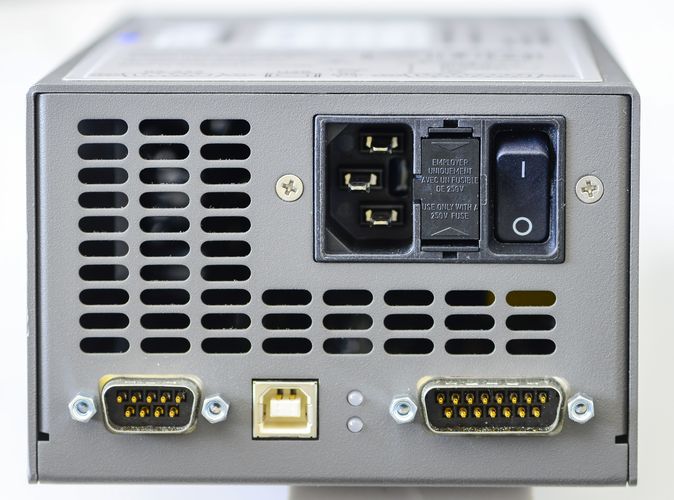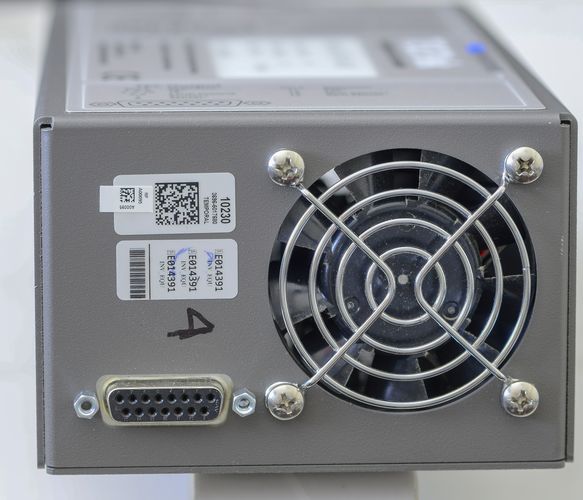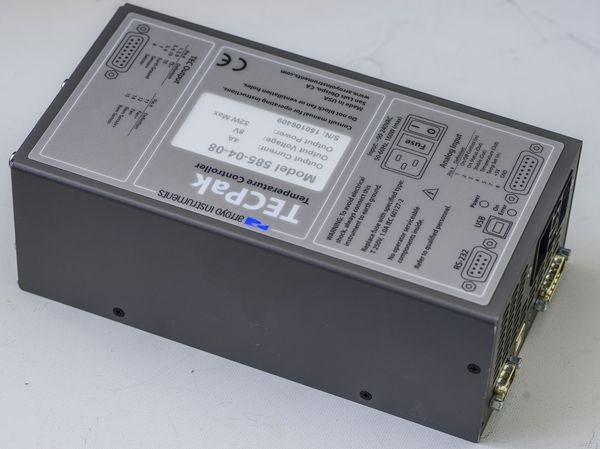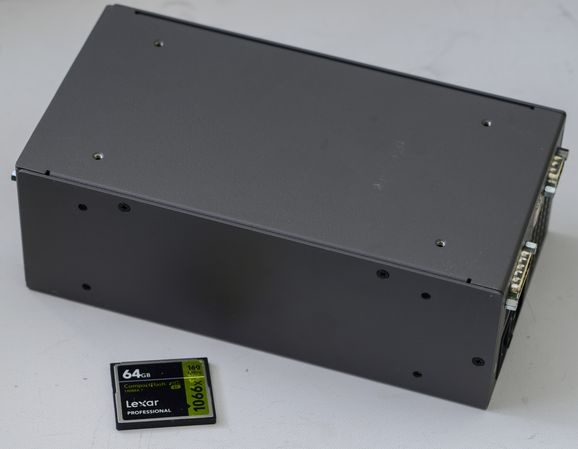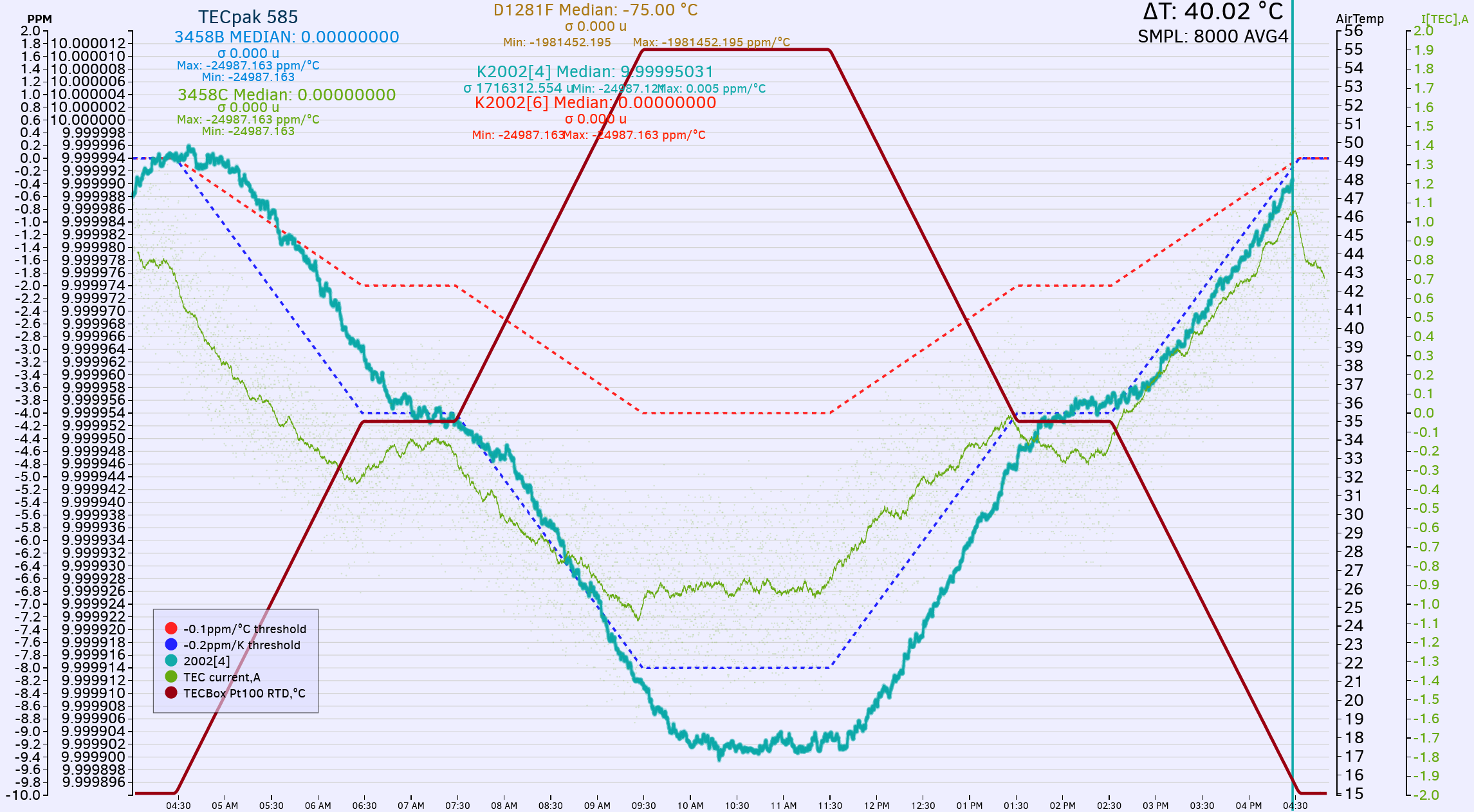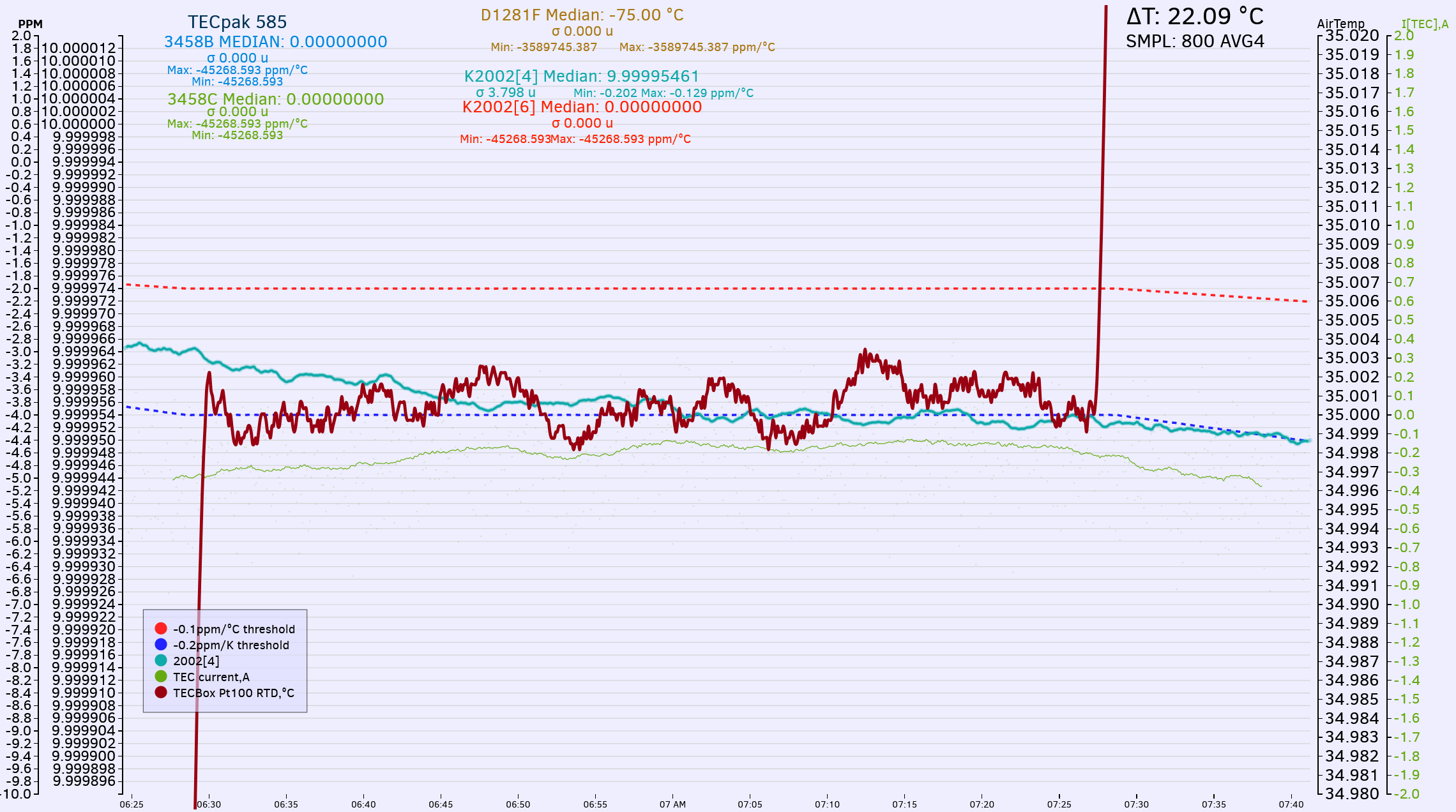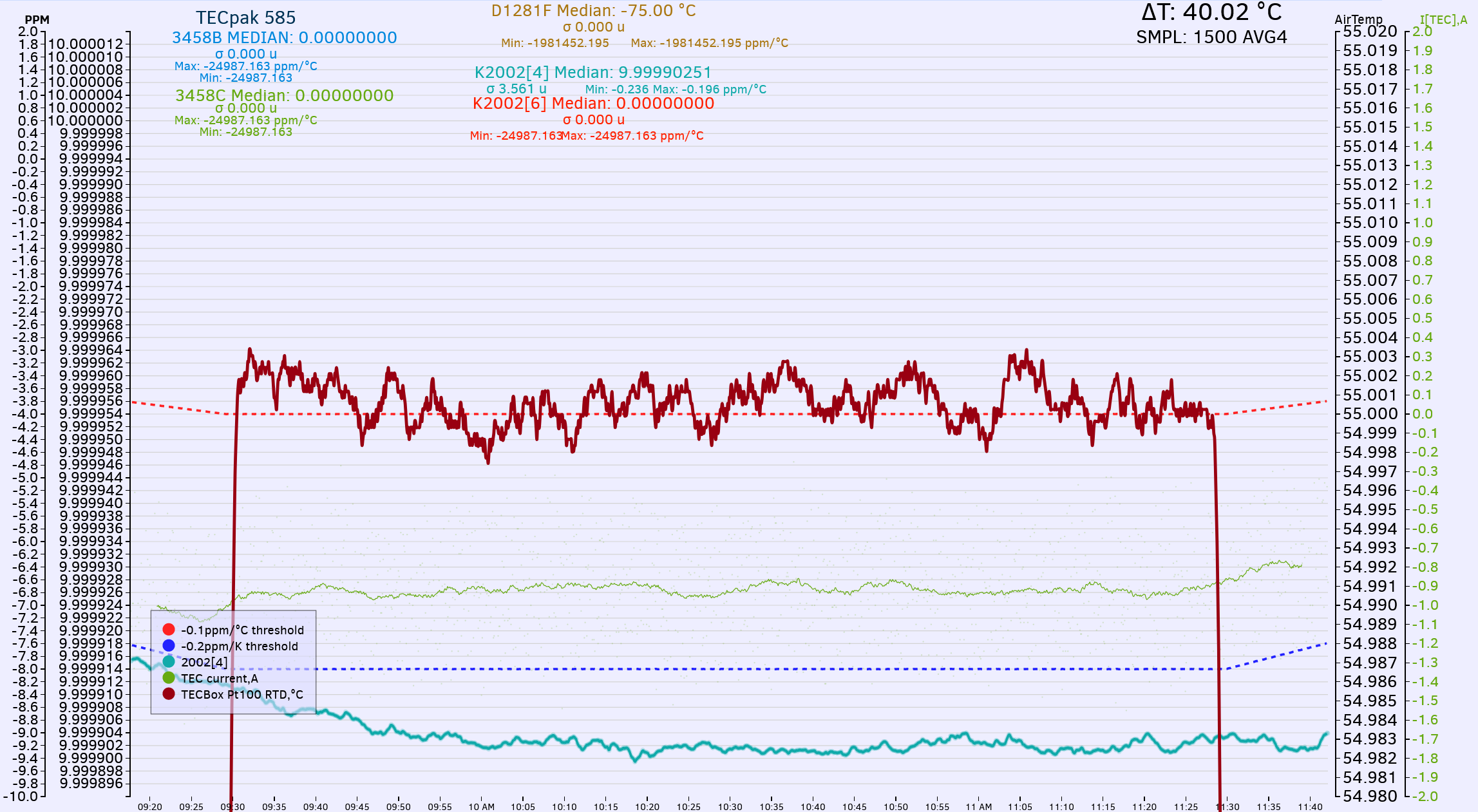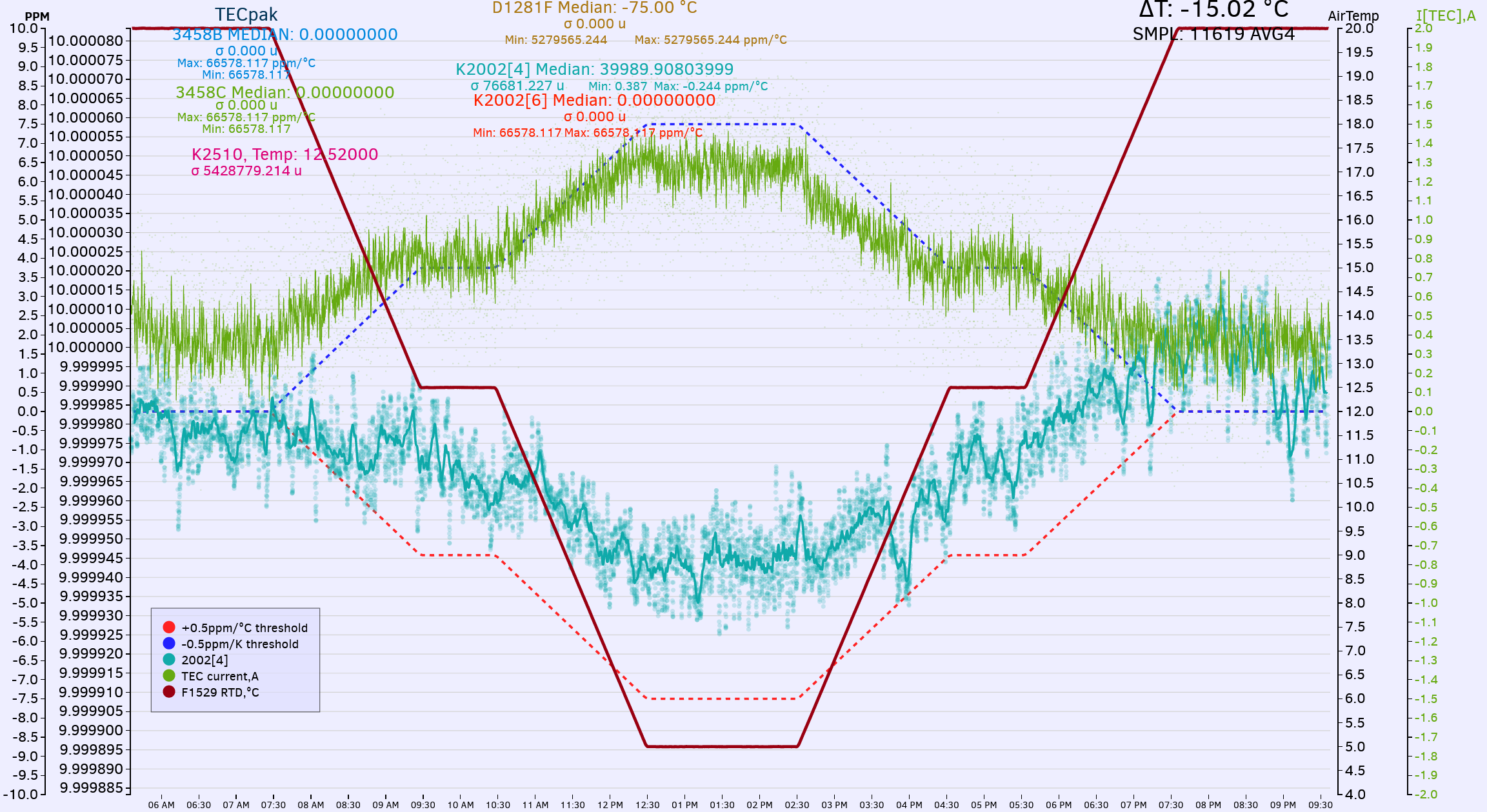- Introduction
- Disclaimer
- Exterior and interior of the unit
- Experimental setups
- Example TECkit Python application
- Test results
- Summary and conclusion
Introduction
Performance of electronic devices over the temperature variations is important parameter. Thermal tests are conducted in chambers for nearly all commercial electronics, to ensure product quality and specifications meeting the requirements. For smaller devices and components, like circuit boards, ICs, passive and active parts smaller test setups are often used, both during design and production test stages. Also some fields like optics, electronics for extreme conditions, aerospace-targeted devices may need onboard temperature regulation, sometimes for both cooling and heating.
We use TEC semiconductor heat pumps with small home-made test chambers to determine performance of various devices and already shown examples of such experimental setups and open-source control applications. This time we’ll review another TEC programmable temperature controlled, tailored for optics application.
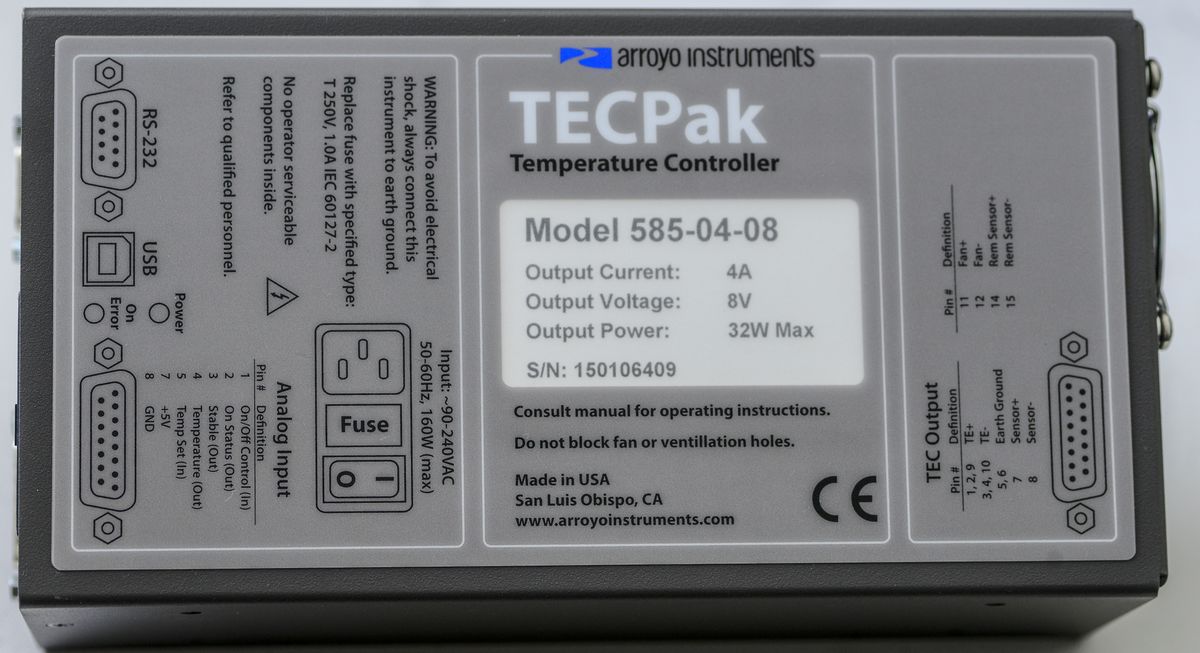
Image 1: Arroyo 585-03-08 TECpak temperature controller label
This is Model 585, TECPak controller, manufactured by american company Arroyo Instruments. 585 series are released to market around 2009. These are relatively powerful integrated modules for temperature control. Modules can be used independently or in conjunction with a Arroyo’s LaserPak for a complete laser/optical system environments.
In addition to USB and RS-232 interfaces, there also is an analog control interface that enables operation without the need for a computer and that allows the user to turn the output on and off, to monitor actual temperature via the analog out and to receive an indication that the unit has stabilized.
Feature set is quite rich for such a compact device:
- Temperature stability better than 0.004 °C over 1 hour (0.01 °C over 24 hours)
- 10 and 100 µA bias for NTC thermistors (up to 450 kΩ) and 20…192 Ω for 2/4-wire RTD or AD590 sensor
- Multiple power options, including 32 W and 55 W output power rating
- Supports external fan via programmable power source, up to +12V 0.35A
- USB and RS232 communication interfaces for programming, control and monitoring with SCPI-alike protocol
- Analog input and output, status outputs and LEDs to allow computer-free operation
- Freeware software control application, ArroyoControl. LabView driver included.
- Universal 90-240 mains powersupply
- Both models sized 77*115*216 mm and operate from +10 to +40 °C ambient
Model 585-03-08 reviewed today offers 3 A, 8 V bidirectional power source for TEC.
Arroyo also makes fully featured TECSource controllers, such as Model 5240/5300 series or high power Model 5400, with nice clearly visible with protection laser googles VFD display, and supporting power up to 960W for TEC system.
Disclaimer
Redistribution and use of this article, any parts of it or any images or files referenced in it, in source and binary forms, with or without modification, are permitted provided that the following conditions are met:
- Redistributions of article must retain the above copyright notice, this list of conditions, link to this page (https://xdevs.com/article/tecpak585/) and the following disclaimer.
- Redistributions of files in binary form must reproduce the above copyright notice, this list of conditions, link to this page (https://xdevs.com/article/tecpak585/), and the following disclaimer in the documentation and/or other materials provided with the distribution, for example Readme file.
All information posted here is hosted just for education purposes and provided AS IS. In no event shall the author, xDevs.com site, Arroyo Instruments or any other 3rd party be liable for any special, direct, indirect, or consequential damages or any damages whatsoever resulting from loss of use, data or profits, whether in an action of contract, negligence or other tortuous action, arising out of or in connection with the use or performance of information published here.
If you willing to contribute or add your experience regarding testing performance of various instruments or provide extra information, you can do so following these simple instructions
Exterior and interior of the unit
Experimental setups
To make example practical we will measure temperature coefficient of precision voltage reference module, few resistors and few temperature sensors to determine relation between air temperature and output signal/resistance.
Example TECkit Python application
Test results
Initial ramps with xDevs.com teckit Python software
Here I have used TECPak 585 to perform multiple hours sweep on temperature with test DUT in small DIY chamber. Temperature and data acquisition was controlled from xDevs.com’s teckit open-source application. Support for Arroyo TECPak was added on low level library, instead of our typical Keithley 2510 TEC SMU. Rest of the logic in application remain unchanged.
First plot shows controlled temperature ramp from +15.0 °C to +55 °C with intermediate soak time at half-scale, +35 °C. Keithley 2002 DMM was used to monitor and log Ian Johnston’s PDVS2 mini 10V voltage source placed inside TEC chamber. Voltage source was programmed for constant +10.00000 VDC output. Light thin green line is current into TEC element provided by Arroyo 585 TECpak.
Changing temperature by 40 °C allow us to evaluate temperature coefficient (stability) of PDVS2 mini with good resolution and confidence. In this case voltage dropped from 9.999994 VDC to 9.999902 VDC. By using simple box math, we can easily determine TC of the output:
TCDUT = (V+15°C – V+55°C ) / |15 °C – 55 °C| TΔ = -92 µV / 40 °C TΔ = -2.3 µV/°C
As result PDVS2mini box temperature coefficient equals -2.3 µV/°C or -0.23 ppm/°C relative to +10.00000 VDC full scale output. Very impressive result, considering size, cost and hardware inside PDVS2 mini (18-bit DAC and LM399 voltage reference).
Ramp was performed in both directions to test hysteresis effects, and data converged nicely to same values. Big drop (vertical line at 4:30 by the end of the test) is result of battery inside PDVS2 mini running out of juice.
Overall time for this ramp was 12 hours, with ramp speeds 0.125 °C/minute. Now lets zoom in and look into middle step flat section:
Temperature axis rescaled to much finer resolution here, at 0.001 °C per division. Arroyo TECPak provided nice and stable control, with variations of temperature readout less than ± 0.003 °C during step time 1 hour.
Next plot shows 2 hour step at peak +55 °C temperature. Again, no problems or overshoots, while maintaining ± 0.004 °C temperature stability.
Opposite test with going sub-ambient temperatures, with ramp from +20 °C to +5 °C during 15 hour test. This time DUT was 40 kΩ resistor measured by same Keithley 2002.
24 hours log with fixed temperature point +23.000 °C
24 hours temperature sweep +18.0 °C to +45.0 °C
Comparison to Keithley 2510
Summary and conclusion
Stay tuned and let us know your feedback! Discussion about this article and related stuff is welcome in comment section or at our own IRC chat server: irc.xdevs.com (standard port 6667, channel: #xDevs.com). Web-interface for access mirrored on this page.
Projects like this are born from passion and a desire to share how things work. Education is the foundation of a healthy society - especially important in today's volatile world. xDevs began as a personal project notepad in Kherson, Ukraine back in 2008 and has grown with support of passionate readers just like you. There are no (and never will be) any ads, sponsors or shareholders behind xDevs.com, just a commitment to inspire and help learning. If you are in a position to help others like us, please consider supporting xDevs.com’s home-country Ukraine in its defense of freedom to speak, freedom to live in peace and freedom to choose their way. You can use official site to support Ukraine – United24 or Help99. Every cent counts.
Modified: April 18, 2020, 3:41 p.m.

